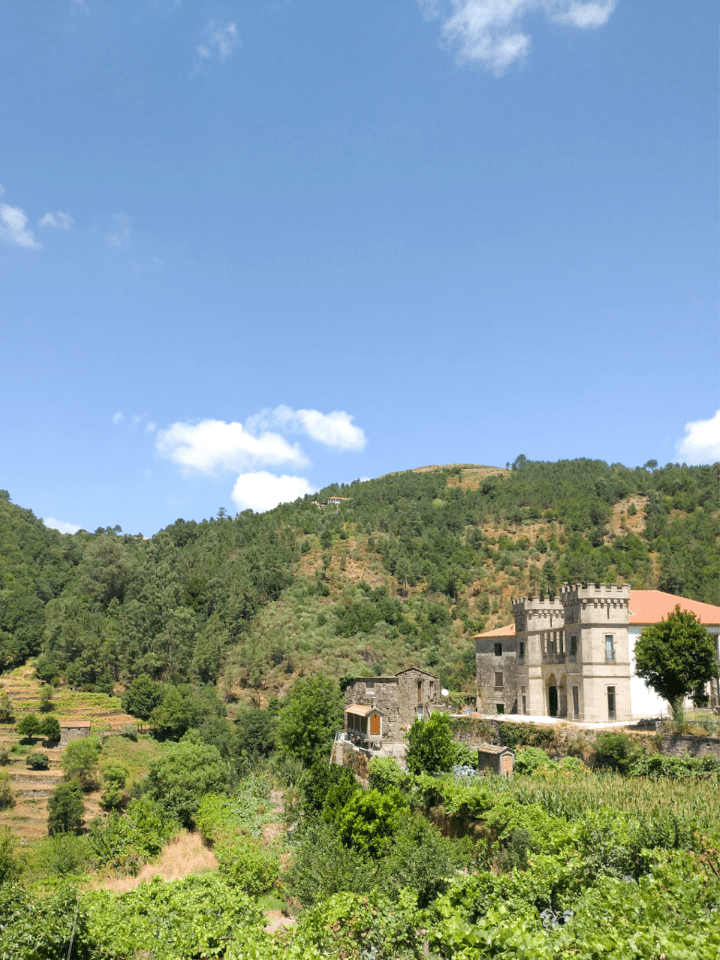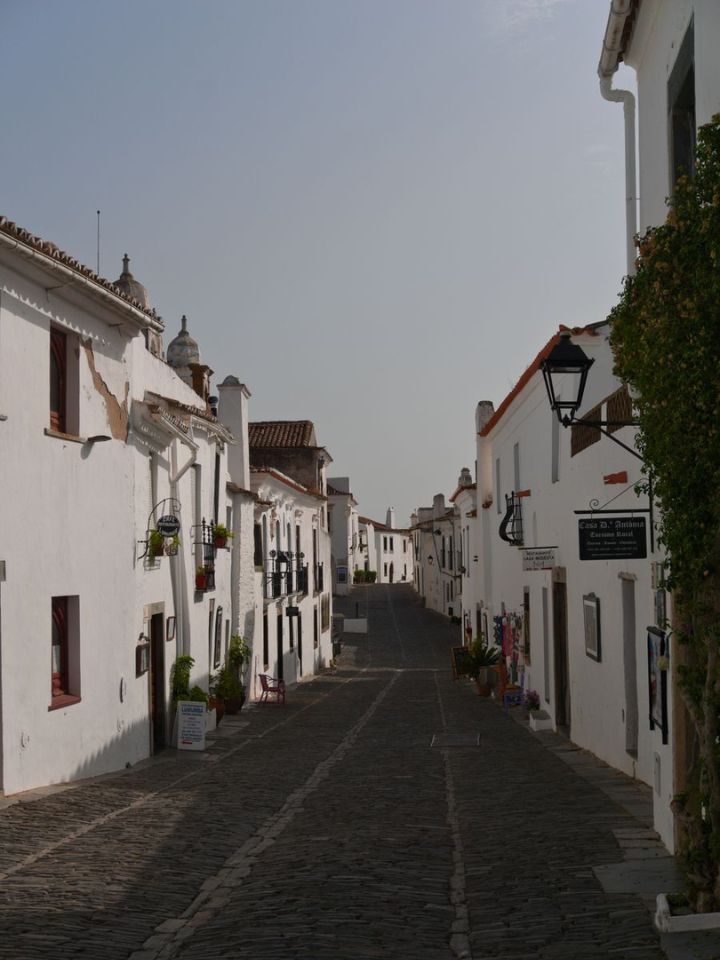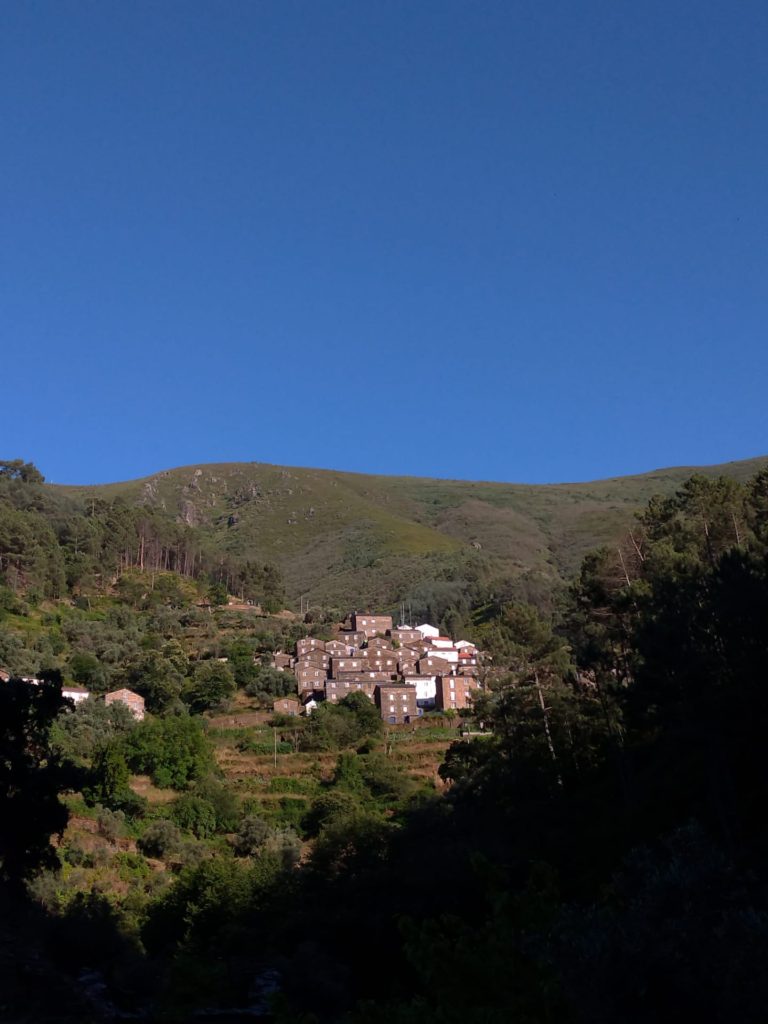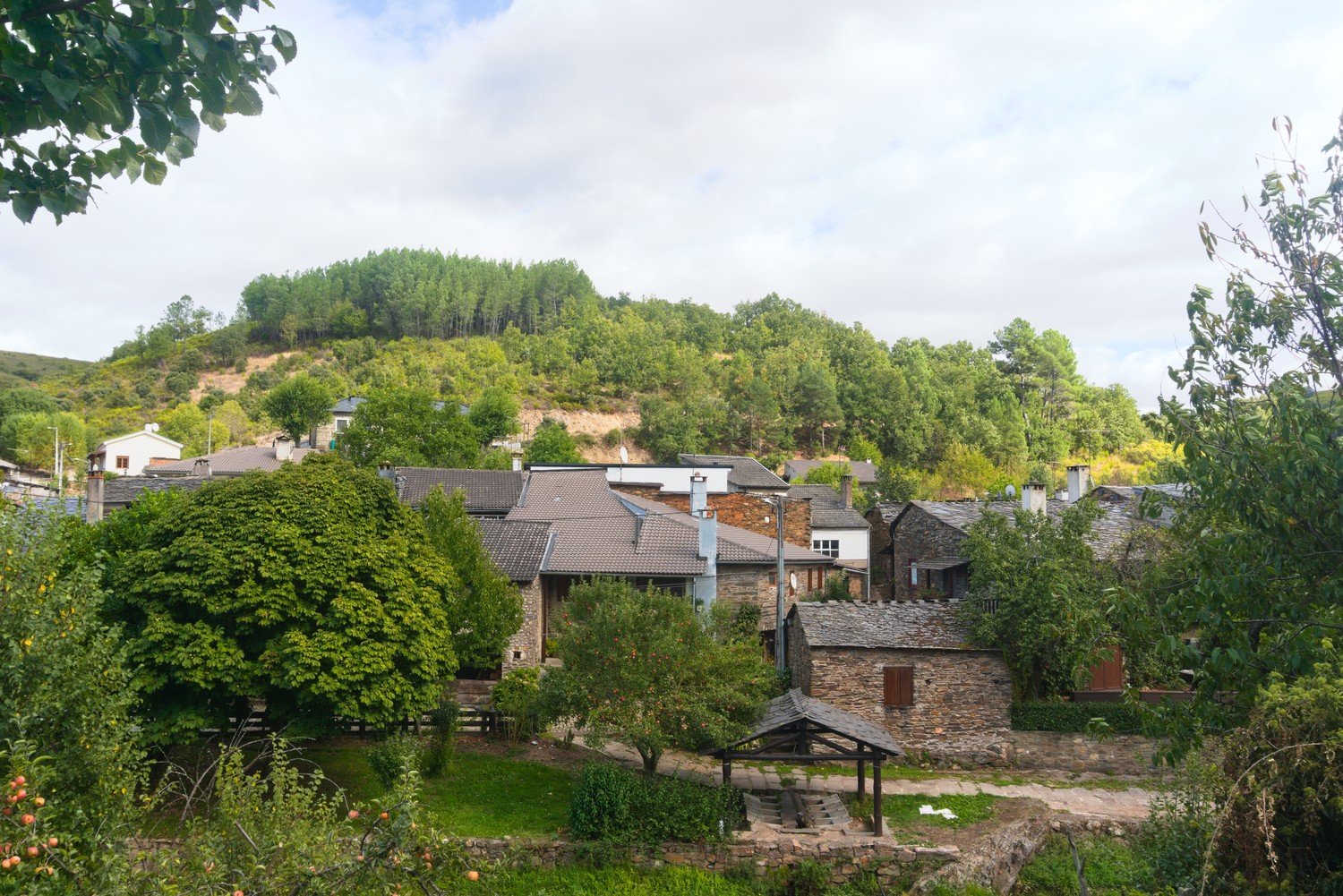
In Bragança, right at the top of Portugal, we find Rio de Onor, a village in the Montesinho Natural Park and divided with the neighboring country: in Spain, Rihonor de Castilla; in Portugal, Rio de Onor, distinguished among the inhabitants as the people from above and the people from below. The connection between these villages gave rise to their own dialect, the rionorês, a mixture of Portuguese and Spanish.
In 2017, Rio de Onor won the 7 Wonders of Portugal: Villagesin the category of village in a protected area, the final of which was between this village and Lindoso, in the Peneda do Gerês National Park (another village we've visited). For Rio de Onor, it seems to us that this award was an important way of revitalizing a village which, with an increasing number of ageing inhabitants, was in danger of falling into oblivion. You can see the video of the village's application here.
The Community Village
What most distinguishes Rio de Onor from the rest of Portugal's villages is its concept of Community Village.
For years, Rio de Onor and Rihonor de Castilla created a system of sharing, which even included their own courts: the ovens and mills were communal (as is the case in other villages), but so was the land (worked jointly and on both sides of the border), the herd (which was rotated), the crops were divided equally, the bull was communal and the tasks were carried out in a shared way. In Rio de Onor, the true concept of “vezeira” was practiced, communal grazing.
Infractions were recorded in the Court Sticka tool that was always with the butler, and there was a butler on each side of the border.
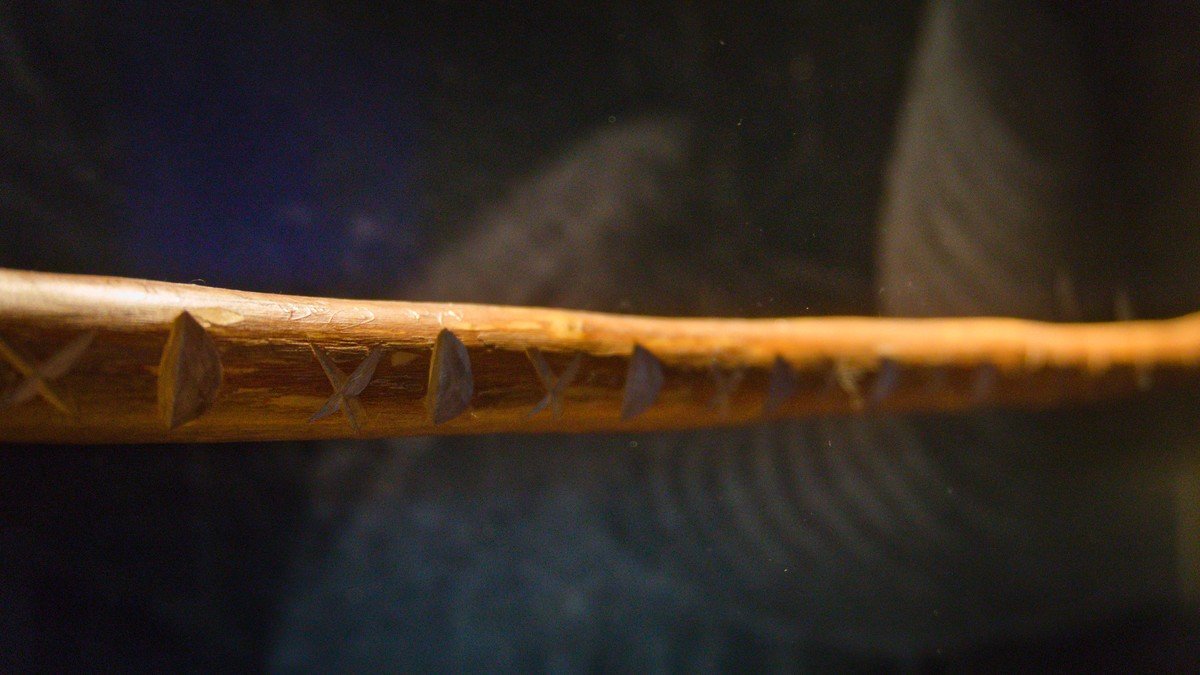
On the Portuguese side, the stick is split in half, symbolizing the two sides of the river. Each family has a notch and each transgression is marked with a notch on the respective family. A transgression symbolized a trip to the council which would define the amount of wine to be paid as a fine.
There were several attempts to separate these villages. Franco and Salazar tried and, shortly after April 25, the villages were separated by padlock - but even that didn't work. Even during COVID-19, the governments of Portugal and Spain realized the peculiarity of these two villages and allowed them to cross the border for two hours on Wednesdays and Saturdays (from 9am to 11am), in order to allow farmers with land in the neighbouring country to take care of it.
Community Mill

We left the car by the border marker and set off on foot towards Rio de Onor. The first place we came across was the community mill, accessed by a ramp that takes you down to the river.
This is a water mill with a millstone system. The building has recently been rehabilitated and, in the true application of the word community, can be used by all the inhabitants. It's normally closed, but I'm sure that if you ask, someone will open it.
House of the Bull
On the way, we came across House of the Bull, open every day (except Mondays and Tuesdays) from 10 a.m. to 5 p.m. and is free to enter. We recommend you stop and learn about the history of the village here.
As the name suggests, this was the building that housed the village's community bull and it was converted into a museum in 2018.
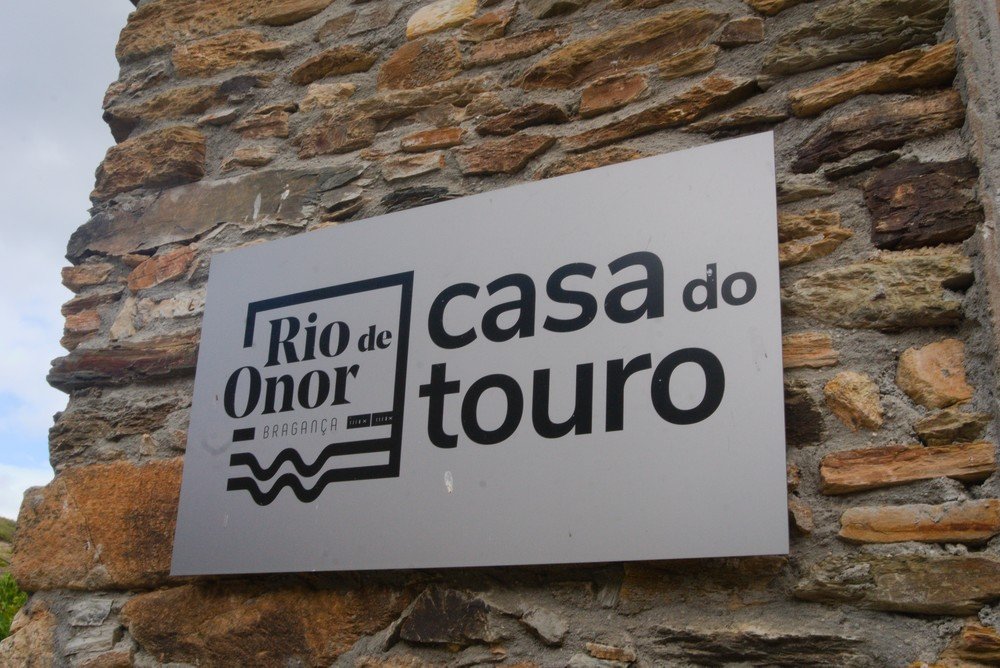
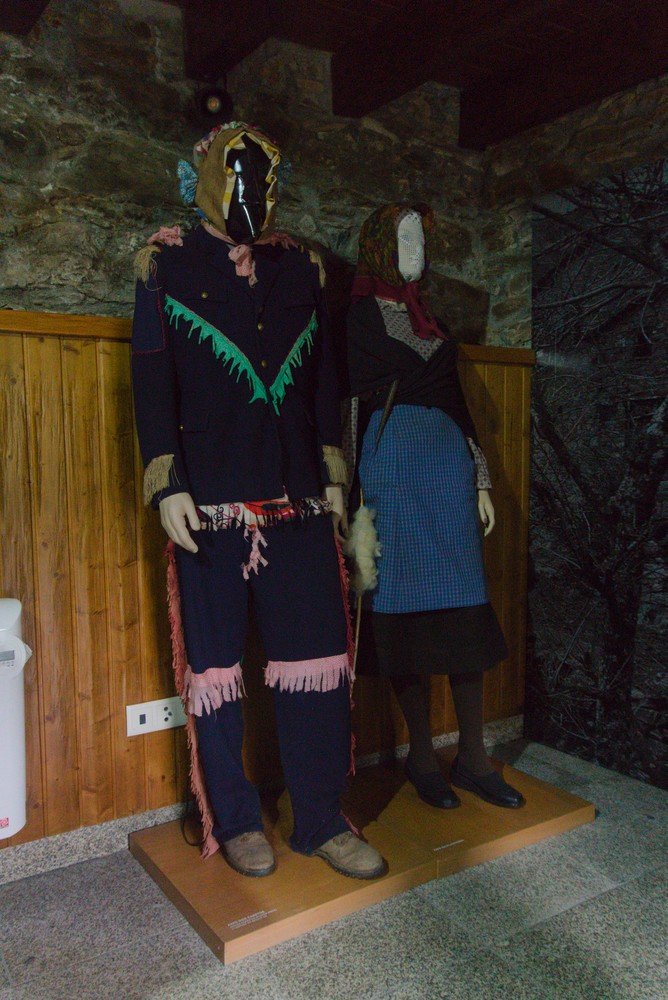
Among the most important features of the House of the Bull are the chain that closed the village after April 25, the stick of truth and the documentary on display upstairs. Don't miss out on the region's typical costumes and masks, which are very similar to the 'caretos' in the village of Podence, a few kilometers from Rio de Onor.
Roman Bridge of Rio de Onor
Crossing towards the central core of the village, you will pass under a 19th century Roman bridge. Below, you'll find the River Onor or River Contensa, a tributary of the River Sabor, whose source is in Spain.
Looking to the right, you can see the village washhouse.
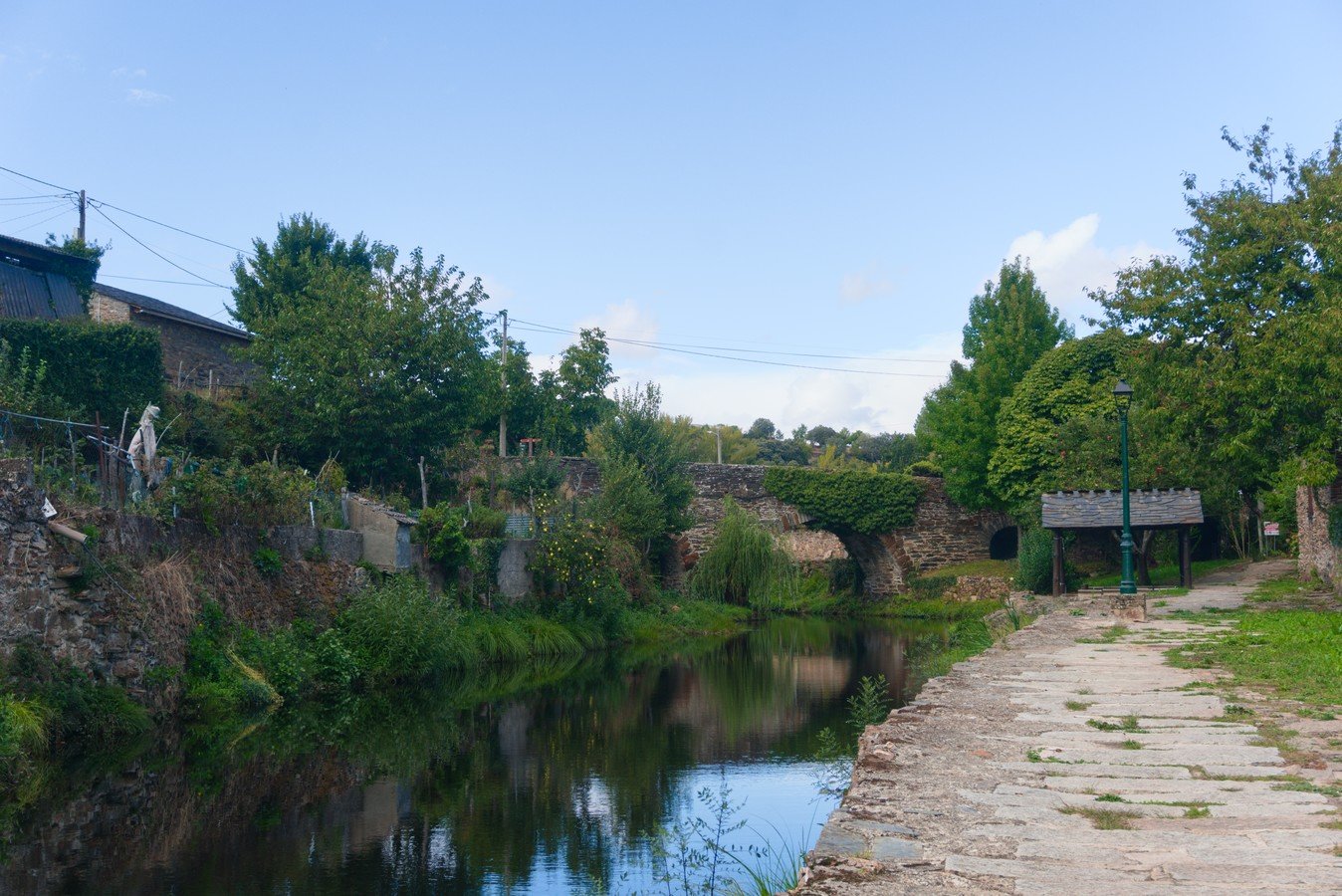
Typical Houses and the 'Carabelho'
Once you've reached the part of the village with the most houses, it's time to explore the streets of Rio de Onor.
Here we found the most typical houses of Trás-os-Montes, made of schist and slate roofs. Most of the houses are two-storey, with the lower floor dedicated to livestock and agricultural products, and the upper floor accessible by an outside staircase where the families lived. Upstairs there is almost always a balcony.
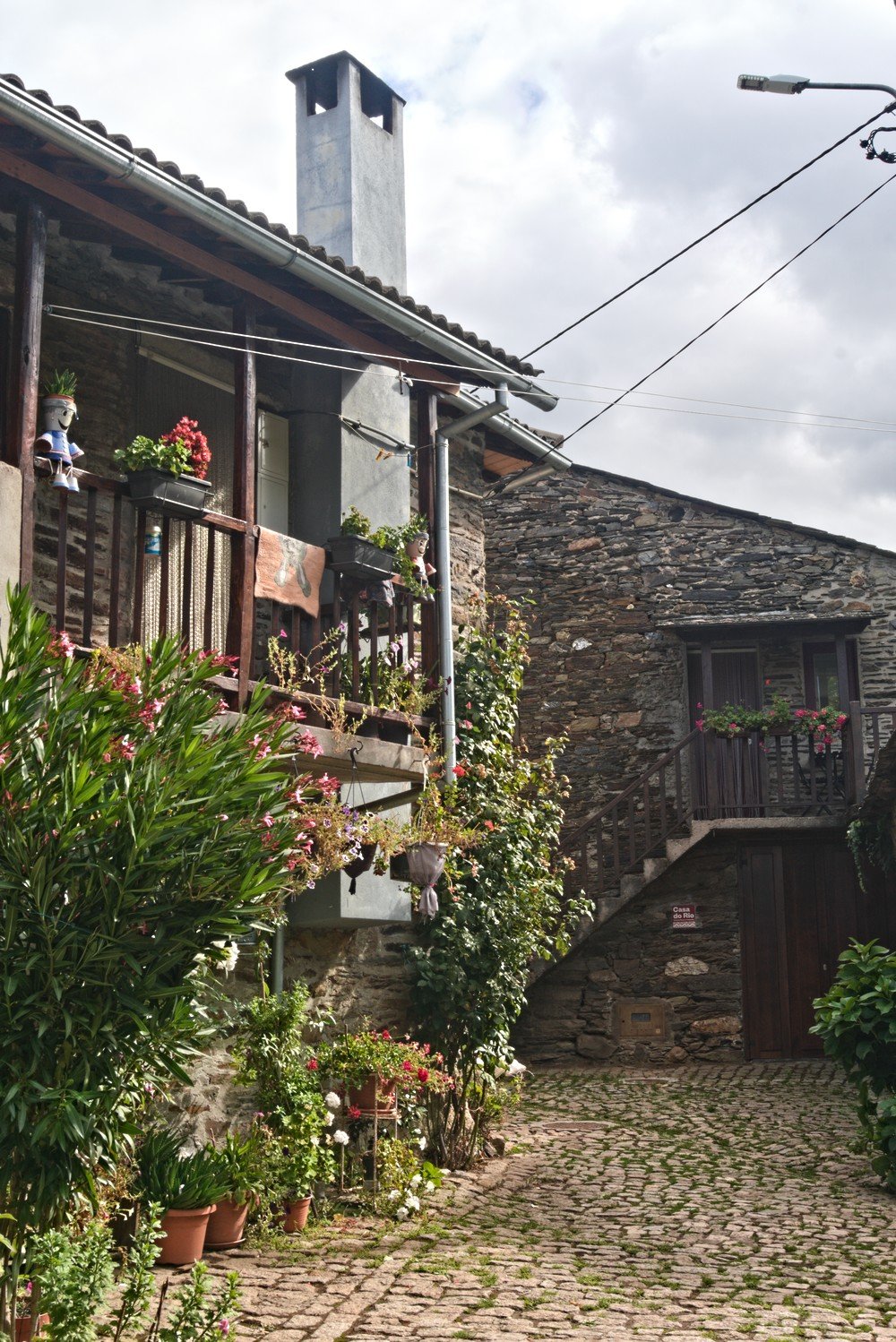
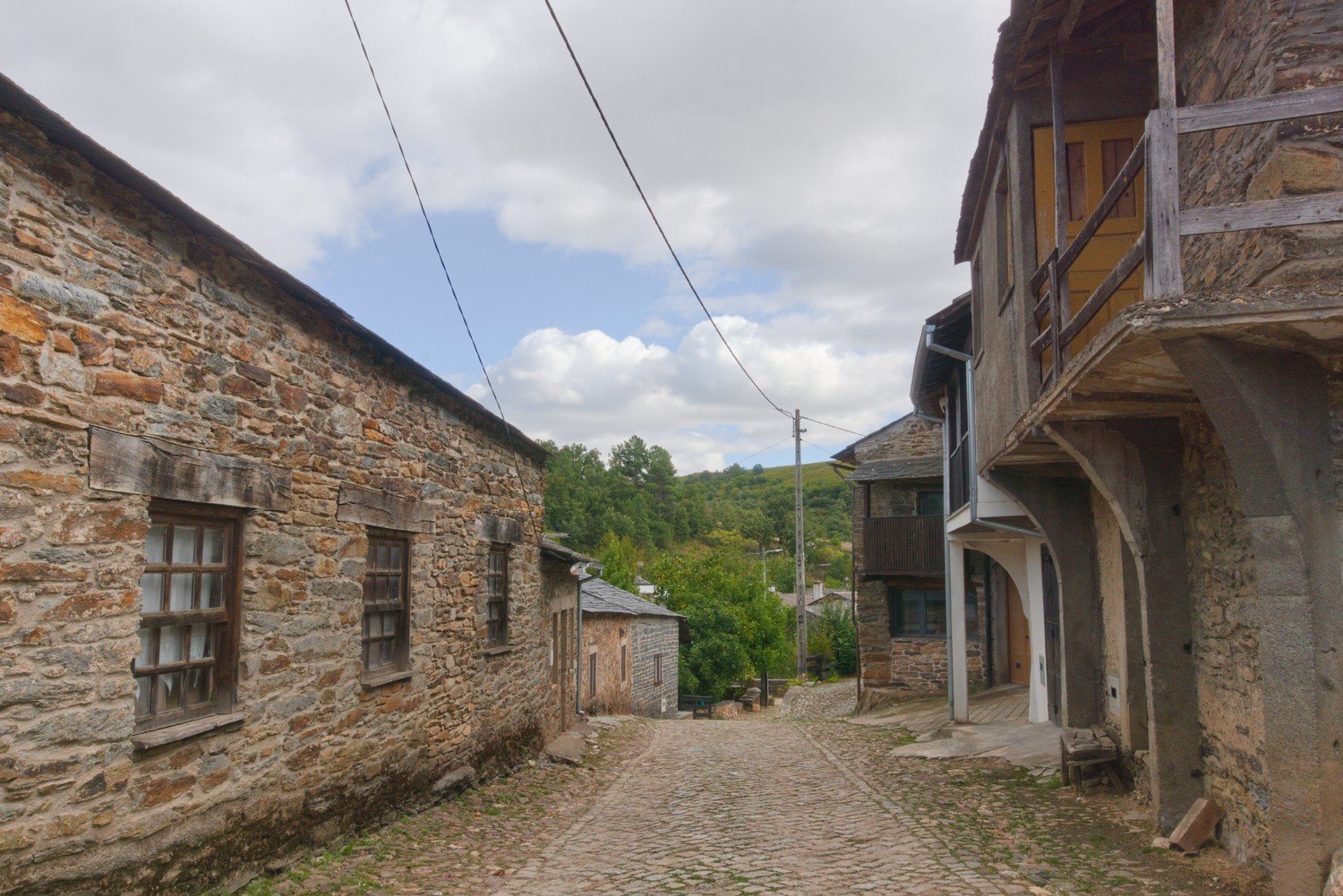
Downstairs, we highlight the carabelho: a traditional lock that demonstrates the trust that exists in the village, as it is easily opened. Just walk around the village and you'll easily spot it.
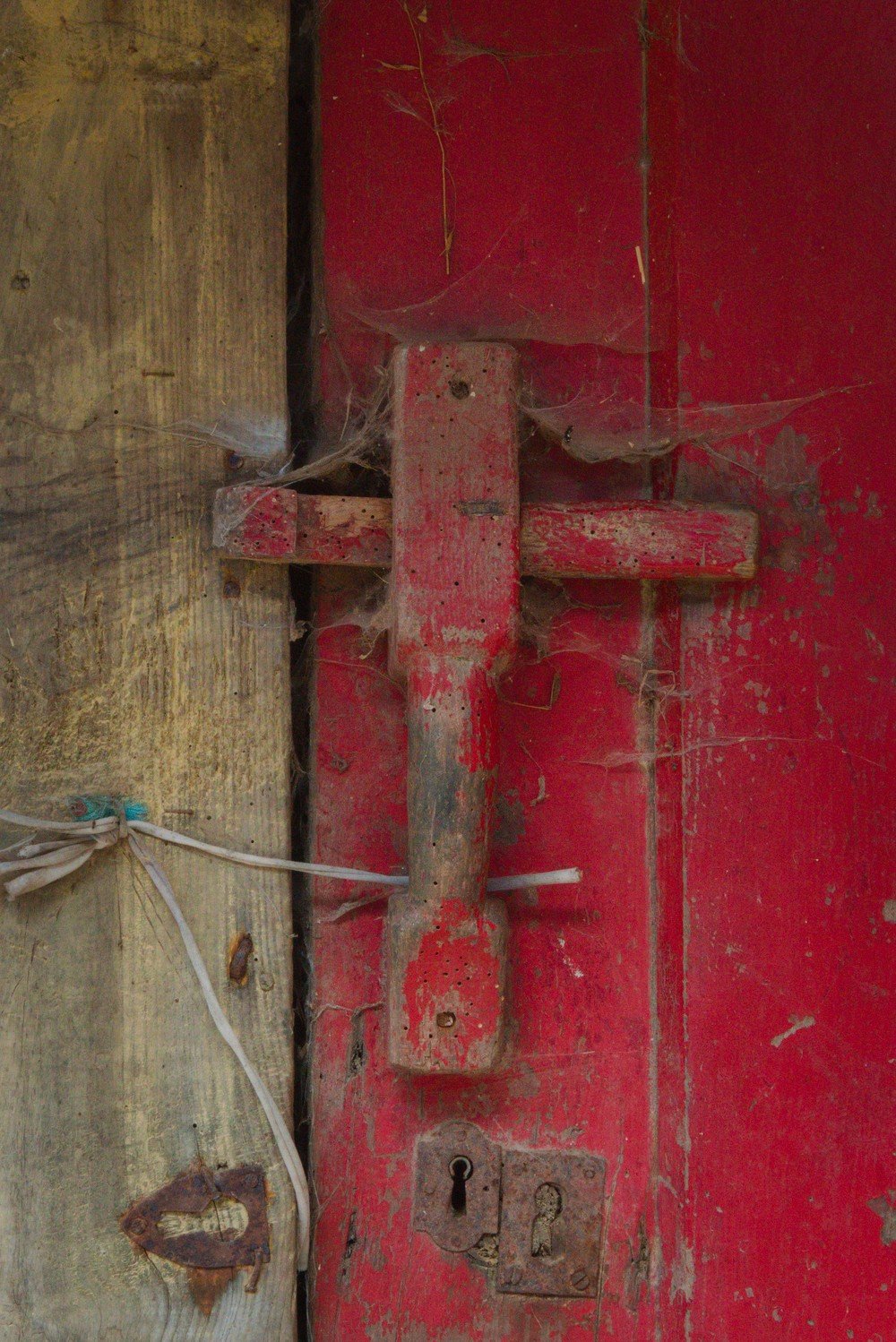
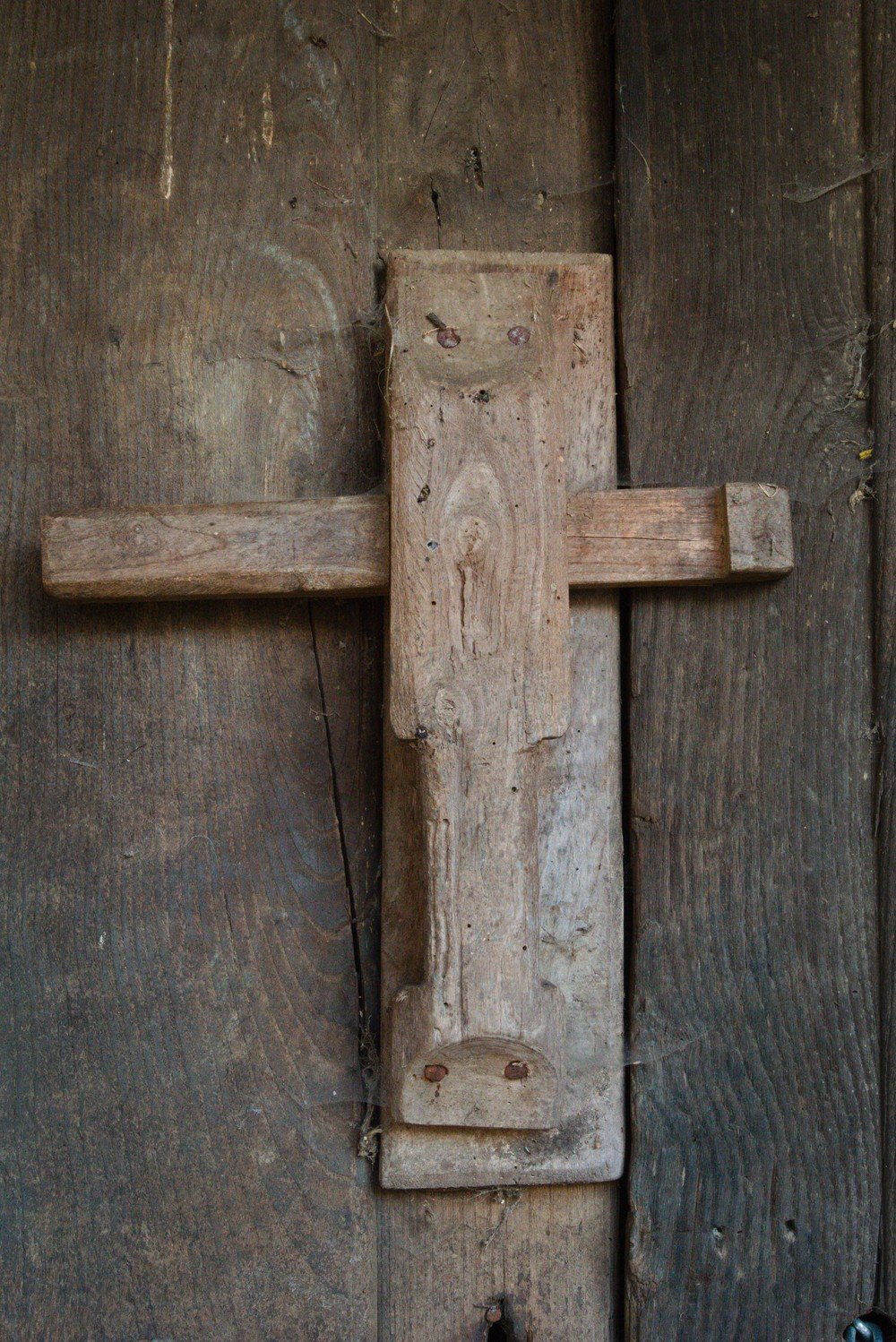
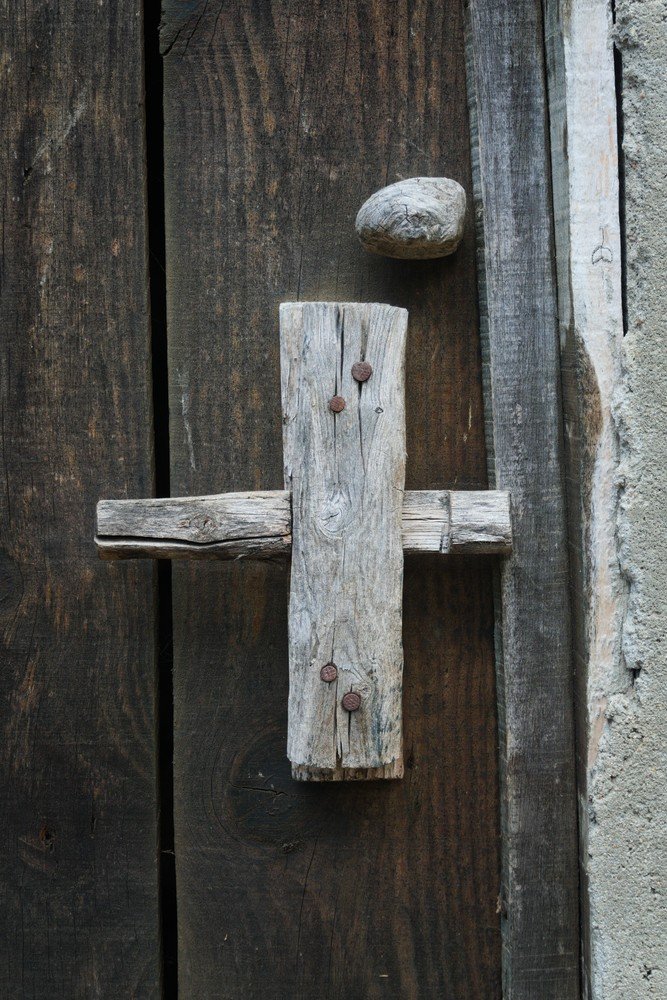
The School, the Swing and the Viewpoint of the 7 Wonder Villages
Walk up the streets until you reach the school. There are no children in the village now, so it has been completely closed, but you'll find an incredible view of the village here.
There is also a swing and, of course, the famous viewpoint of the 7 Wonder Villages of Portugal.
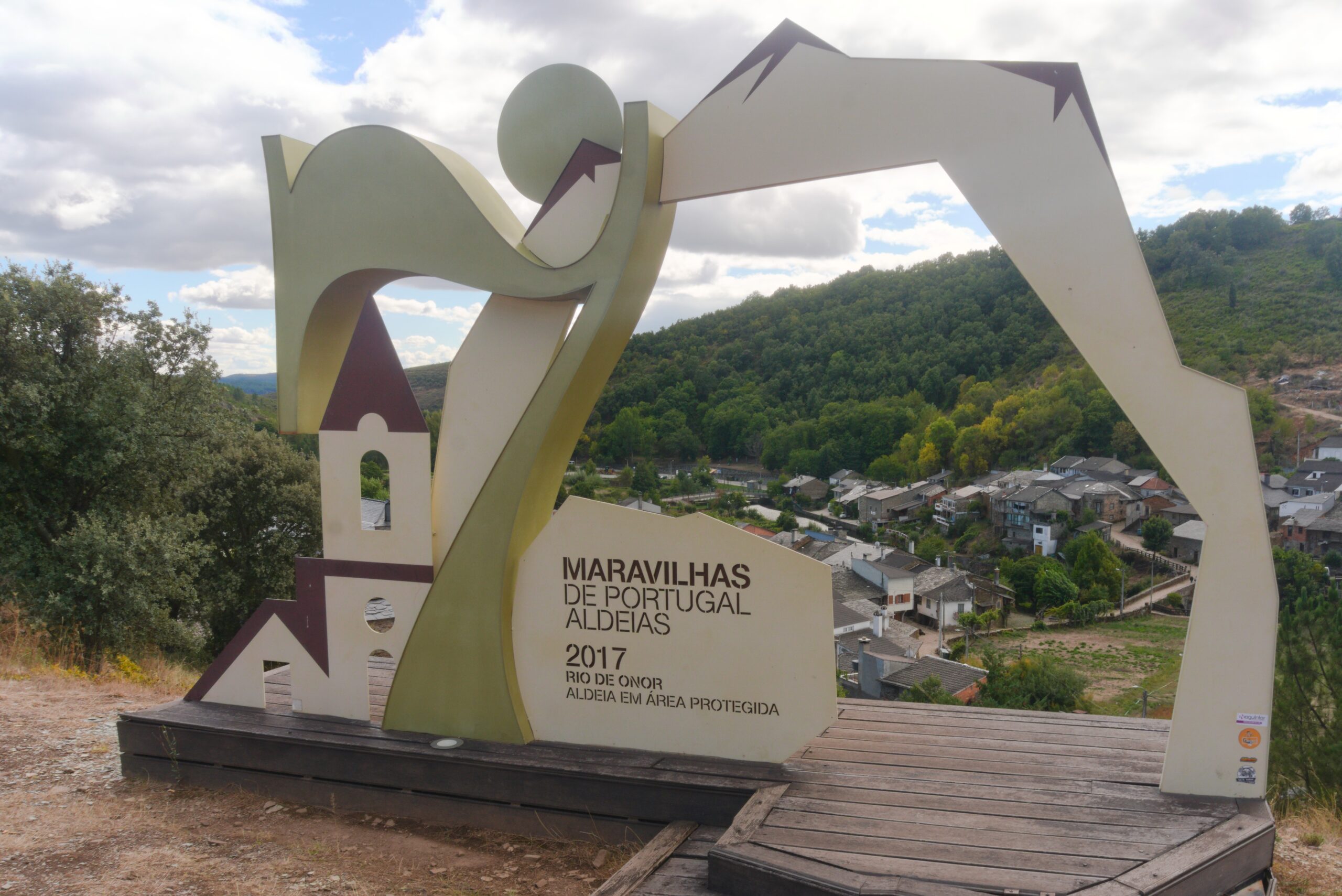
Parish Church of Rio de Onor
At the opposite end of the village we find the Parish Church of Rio de Onor, São João Baptista Church.
Although it's a small building, it's interesting to see how much care the locals put into it. We arrived just as two ladies were decorating it for Mass (a ritual they perform every week) and they immediately invited us in to see their church.
Next to it is the village cemetery.

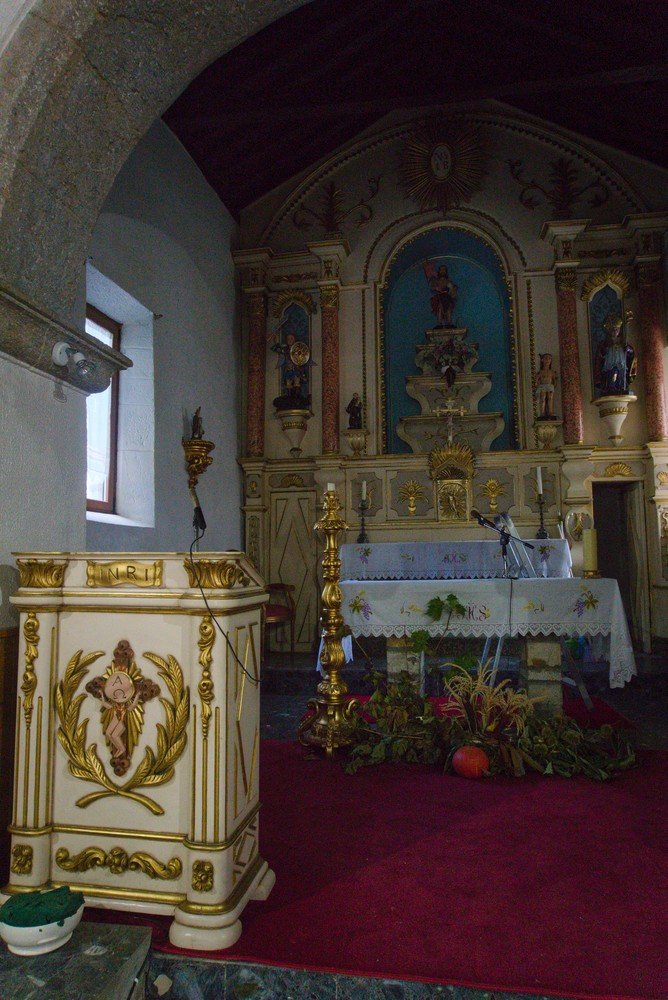
Rio de Onor Details:
Community Oven and Forge, 'Faceira', Paintings, Cafe, Festivities and Handicrafts
We had already heard that the inhabitants of Rio de Onor were unusually friendly - and it wasn't long before we experienced this first-hand. As we headed towards the church, we came across two ladies under a balcony: one mending some glass socks, the other standing with an apron full of grapes that we were “obliged” to accept and bring home.
They encouraged us to take advantage of the fact that the church was open to see inside. We asked about the community forge and oven, and they replyed that it's usually closed now, but “knock on a neighbor's door and someone will have the key”. It's a feeling of openness that you don't find in any village.
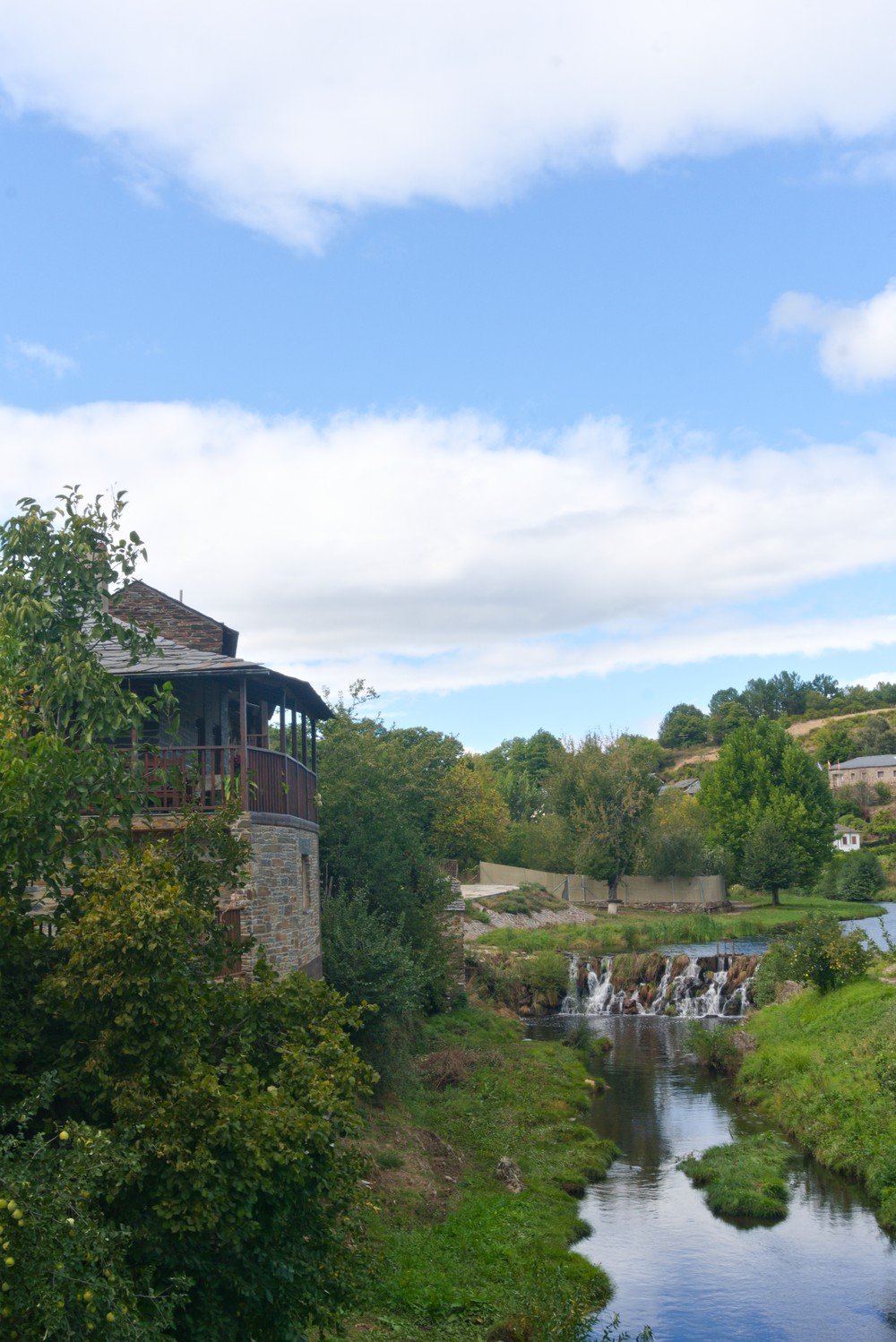

We looked back and saw a huge painting in tribute to Rio de Onor. The ladies said that they were made by a boy who lives on the neighboring land. There are several scattered around the village and the people are proud of them.
We continued on our way and couldn't leave without having a coffee at the Café da Associação, the village's social space. In the direction of the café, you see on your left the faceira, the field (where you can still see the divisions into plots) and where communal farming was practiced.
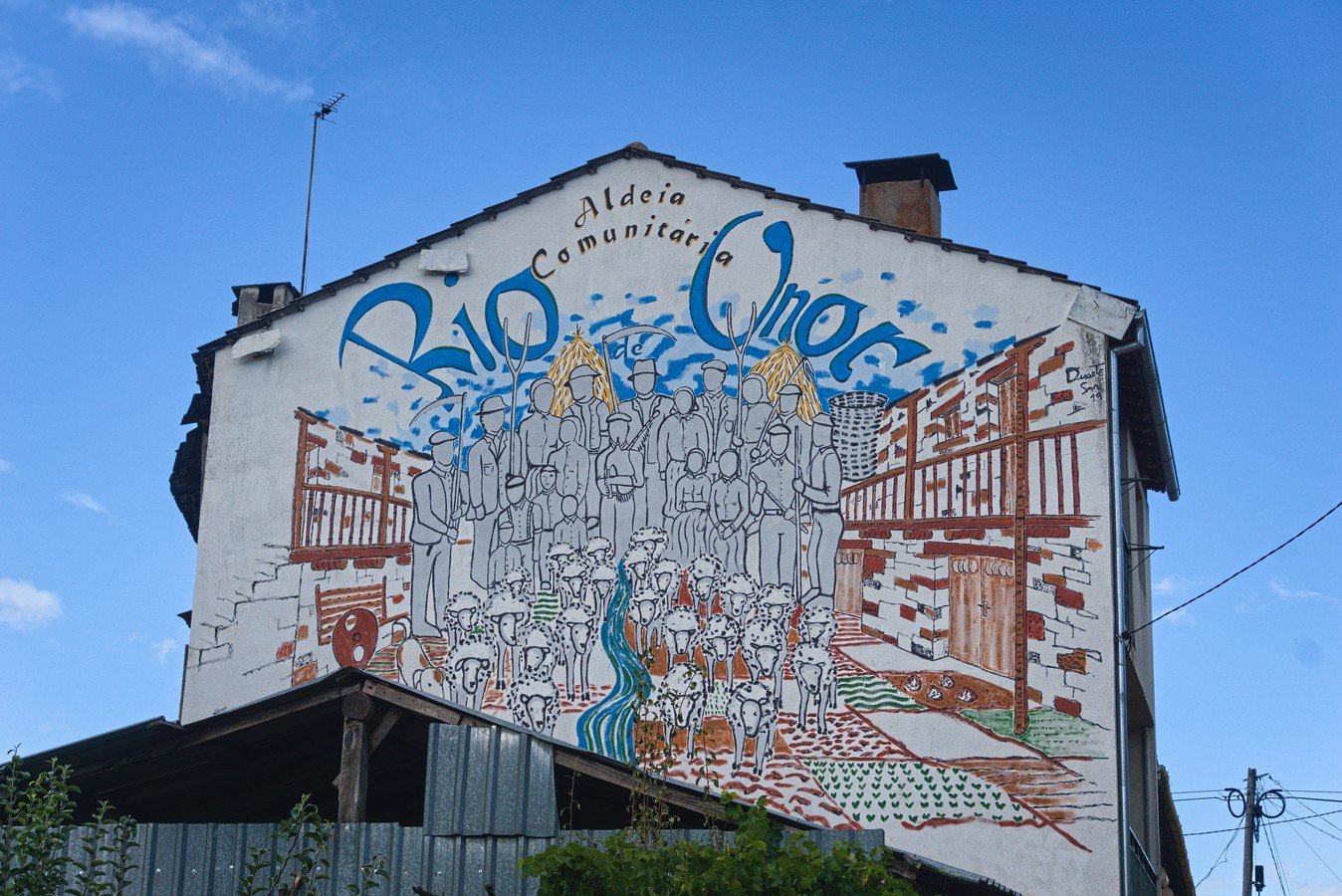

Towards the car, we stopped at the only craft store which was open (there is at least one more, but we visited on a weekday at the end of September, which is why it might have been closed) - the Casa das Máscaras e Mais, and we couldn't leave without bringing back a souvenir mask made of gourds.
These masks, identical to those of the Podence 'caretos', are then complemented by a slightly different costume, which will take to the streets on January 6 during the Kings Fest or Boys' Festival, when the village stewards go with the caretos from Rio de Onor to carry out a petition, performing dances and games along the way.
The caretos are followed by the 'filandorra' and the 'madamas'. The filandorra consists of a boy dressed as a woman with his face covered in lace, holding a spinning wheel in one hand and a spindle in the other. The madamas are followed by boys dressed as women dancing.
Rio de Onor is one of those villages where time seems to slow down and every moment is truly enjoyed. Strolling through the streets and feeling the friendliness and openness of the population is a wonderful experience, complemented by the beauty of the place.
more to see
(outras aldeias maravilha)
